크리스 Grinter 별, on July 25th, 2011 This Monday I am departing from the usual Arctiinae for something completely different – a microlep! This is a Nepticulidae, Stigmella diffasciae, and it measures in at a whopping 6 mm. I can’t take credit for spreading this moth – all of the nepticulids I have photographed are from the California Academy of Sciences and spread by Dave Wagner while he was here for a postdoctorate position.
The caterpillars mine the upper-side of the leaves of Ceanothus and are known only from the foothills of the Sierra Nevada in California. If you’re so inclined the revision of the North American species of the genus is freely available here (.PDF).
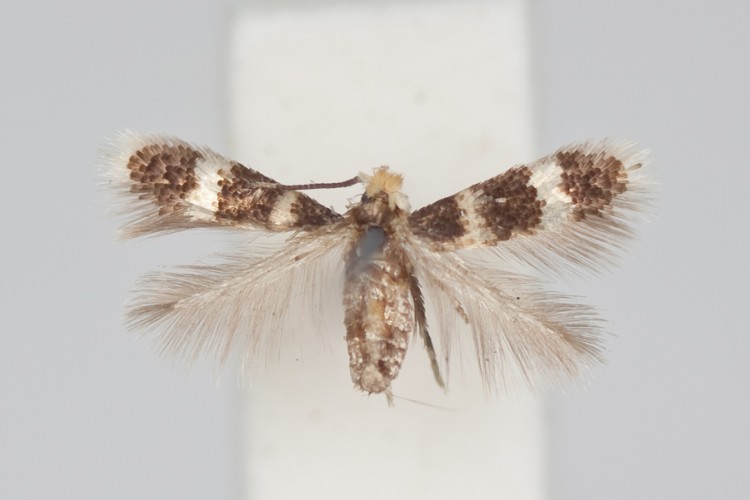 Stigmella diffasciae (Nepticulidae)
크리스 Grinter 별, 7월 22일에, 2011 It’s been a little while since the last GOP challenge, 하지만 this is a softball. I’m hoping they were just too lazy to find a more suitable image…
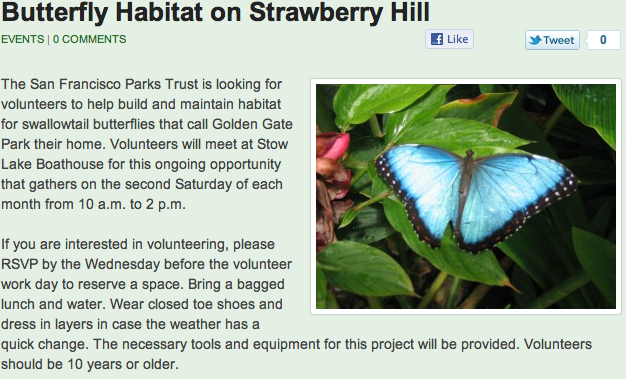
크리스 Grinter 별, 7 월 19 일, 2011 그는 약간의 자유 시간이 있다면 예수는 무엇을 할 것 – 어쩌면 질병을 치료, 전쟁을 끝낼, 또는 굶주린 공급 – 하지만 아니, 모든 사람이 오는 것을보고. 왜 핵심에 충격을하지 – 월마트 영수증에 얼굴을 구울! 적어도, that’s what a couple in South Carolina believe to have found, ㅏ Walmart receipt with Jesus’s face on it. This isn’t exactly new or exciting, humans have a wonderful ability to recognize a face in just about anything. Jesus and other characters “appear” on random things all the time, and even in 2005 a shrine was built to the Virgin Mary around a water stain in a Chicago underpass.
Pareidolia anyone? 사실, that face looks pretty convincing, I’m not too sure this wasn’t just faked or “enhanced”. The closeups even look like there are fingerprints all over it. Since I don’t have a walmart anywhere near me or a walmart receipt on hand I can’t determine how sensitive the paper is and how easy it would have been to do – but how long do you think before it shows up on ebay? 어쨌든, it looks much more like James Randi to me than Jesus (at least we actually know what Randi looks like!).
 from CNN
크리스 Grinter 별, 7 월 18 일, 2011 Over on Arthropoda, fellow SFS blogger Michael Bok shared an image of his field buddy, Plugg the green tree frog. My first thought was of a similar tree frog that haunted welcomed me everywhere I went in Santa Rosa National Park, 코스타리카. Needless to say, Costa Rica instills a sudden habit of double checking everything you are about to do. This species is known as the milk frog (Phrynohyas venulosa) for their copious amounts of milky white toxic secretions. One of the first stories Dan Janzen told me while while I was with him at Santa Rosa was about this species – and accidentally rubbing his eye after holding it. Thankfully the blindness and burning was only temporary.
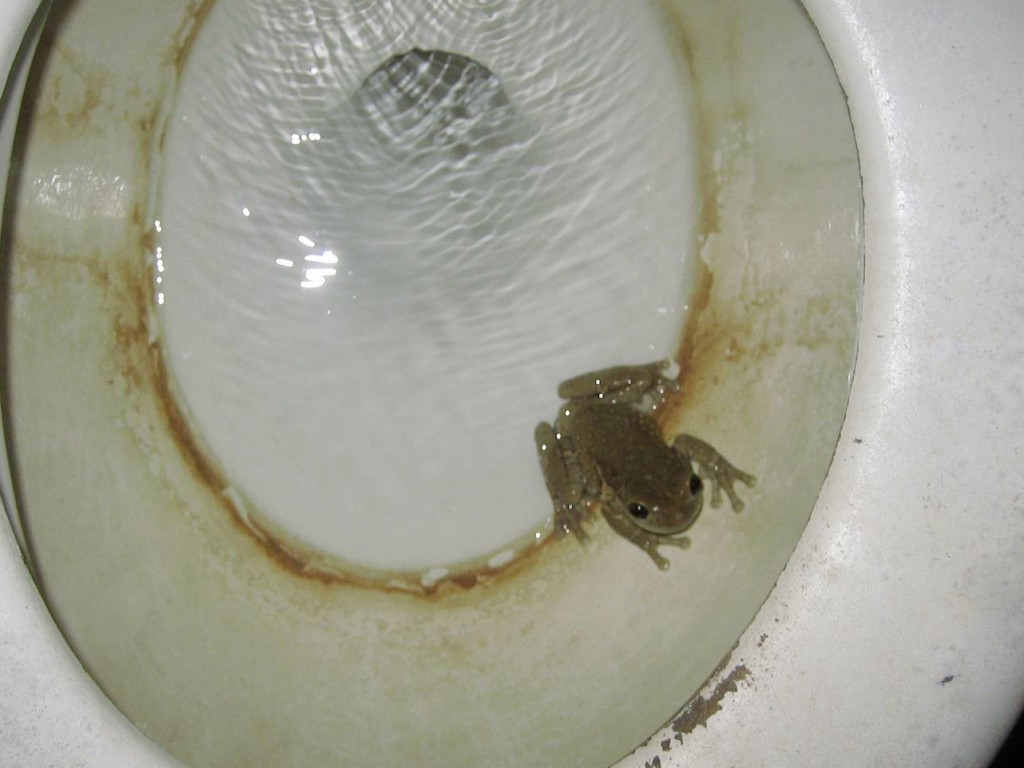 Milk Frog: Phrynohyas venulosa
크리스 Grinter 별, 7 월 18 일, 2011 I’ll keep the ball rolling with Arctiinae and post a photo today of Ctenucha brunnea. This moth can be common in tall grasses along beaches from San Francisco to LA – although in recent decades the numbers of this moth have been declining with habitat destruction and the invasion of beach grass (Ammophila arenaria). But anywhere there are stands of giant ryegrass (Leymus condensatus) you should find dozens of these moths flying in the heat of the day or nectaring on toyon.
 Ctenucha brunnea (Erebidae: 악티나에)
크리스 Grinter 별, on July 12th, 2011 Well as you may have guessed the subject isn’t as shocking as my title suggests, but I couldn’t help but to spin from the Guardian article. I really find it hilarious when I come across anything that says scientists are “astounded”, “baffled”, “shocked”, “puzzled”, – I guess that’s a topic for another time… Nevertheless a 정말로 cool butterfly has emerged at the “Sensational Butterflies” exhibit at the British Museum in London – 양자 간 자웅 모자이크! The Guardian reports today that this specimen of Papilio memnon just emerged and is beginning to draw small crowds of visitors. I know I’d love to see one of these alive again – although the zoo situation would take away quite a bit of the excitement. I think the only thing more exciting than seeing one of these live in the field would be to net one myself!
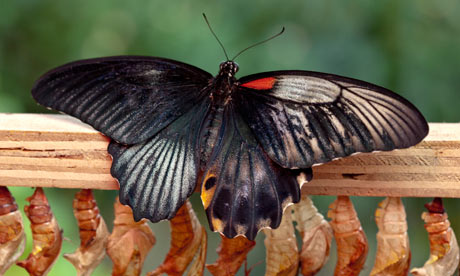
One little thing tripped my skeptical sensors and that is the quote at the end of the article taken from the curator of butterflies, Blanca Huertas. “The gynandromorph butterfly is a fascinating scientific phenomenon, and is the product of complex evolutionary processes. It is fantastic to have discovered one hatching on museum grounds, particularly as they are so rare.”
잘, I don’t specifically see how these are a “product of … evolutionary processes” inasmuch as 모든 life in 모든 forms is a product of evolution. These are sterile “glitches” that are cool, but not anything that has been specifically evolved for or against. Perhaps it would be more adept to call this a fascinating process of genetics (which the article actually describes with accuracy). 또한 – butterflies emerge as adults and hatch as caterpillars – but that’s just me being picky.
크리스 Grinter 별, 7월 11일, 2011 오늘의 나방은 애리조나 남동부와 멕시코의 아름답고 희귀한 종입니다.: 레리나 인카르나타 (Erebidae: 악티나에). 다른 많은 날으는 종들과 마찬가지로 그것은 화려한 색을 띠고 아마도 무의식적일 가능성이 큽니다.. 결국, 숙주 식물은 유초이고 애벌레는 놀랍습니다. (이하).
 레리나 인카르나타 (Erebidae: 악티나에)
이 오래된 이미지는, 확산 표본은 거의 동물 정의를하지 않습니다, 그러나 운이 좋은 한 사진가 산란하는 암컷을 발견 투손 외곽의 언덕 꼭대기에서, 아리조나. 거기에 있는 동안 Philip의 다른 멋진 사진을 확인하세요. SmugMug에서.
 레리나 인카르나타 - 필립 클라인, 버그 가이드 위에서 언급했듯이 이 나방에는 똑같이 인상적인 애벌레가 있습니다. 아스클레아피아스 리나리아 (솔잎 밀크위드).
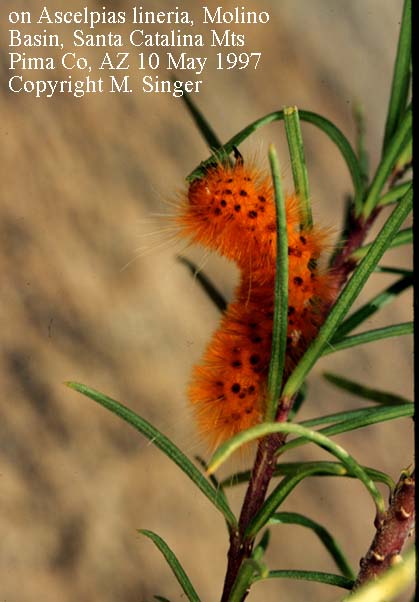
크리스 Grinter 별, 7 월 5 일에, 2011 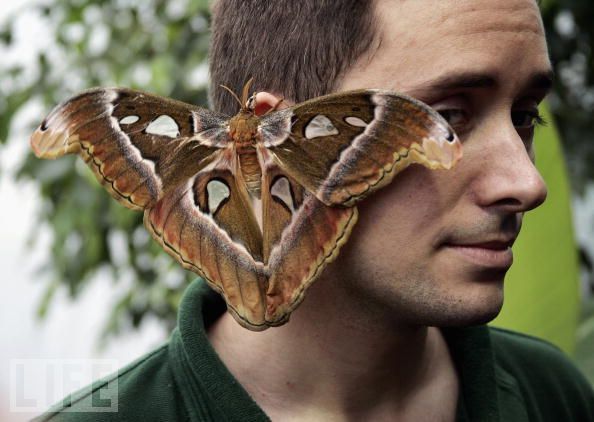
우리가자는 동안 곤충은 우리의 얼굴에 크롤링 관련 도시 전설의 우세가있는 것 같다. 가장 유명한 신화의 라인을 따라 뭔가 “먹을 8 잠자는 동안 매년 거미“. 사실 당신은 번호가 범위 구글 때 4 8… 파운드까지? 놀라운 일이 온라인에서 너무 과장됩니다., 특히 인기 있는 거미공포증과 관련하여. 나는 평균적인 미국인이 평생 동안 거미 몇 마리 이상을 먹는지 의심스럽다.; 집에 거미가 너무 많아서 매일 밤 입에 들어가지 않도록 해야 합니다.! 비슷한 신화는 여전히 신화이지만 진실의 한 알 – 알을 낳기 위해 밤에 당신의 두뇌에 구멍을 뚫습니다.. 이어가그가 인간 기생충이라는 것은 사실이 아닙니다. (고맙게도), 그러나 그들은 빡빡하게 기어 들어가는 경향이 있습니다., 습한 곳. 이는 한국에서 충분히 빈번하게 발생했을 가능성이 있습니다. 예 올드 잉글랜드 이어가그가 이 악명 높은 이름을 얻었습니다.. 바퀴벌레는 귀지렁이로도 기록되어 있습니다. – 그러나 밤에 우리를 밟고 다닐 수 있는 어떤 기어다니는 곤충도 결국 우리의 구멍 중 하나가 될 수 있습니다..
그러나 나는 발견하기 전까지 나방이 귀에 기어 들어가는 소리를 들어본 적이 없습니다. 오늘 이 이야기! 어쩐지 혼란스러운 녹튜드가 이 소년의 귓가에 꽂힌 것 같아, 직접 넣어 놓았는지 궁금하지 않을 수 없지만… 나방은 일반적으로 사람들이 자는 동안 상륙하지 않으며 습기를 찾는 경향이 없습니다., 단단한 반점. 하지만 다시 무엇이든 가능하다, 일부 야행성 동물은 안전한 은신을 위해 낮에 나무 껍질이나 나뭇잎 아래로 기어갑니다.. 나는 심지어 우연히 다른 이야기 영국산 귀나방의 (Daily Mail이 평판이 좋은 출처가 아닙니다.).
당연히, 일부 게으른 뉴스 소스는 파일 사진을 사용하여 “나방” 원본 이야기에서 사진을 복사하는 대신. 사용된 사진 중 하나가 설명된 새로운 종의 나방이기 때문에 더 재미있습니다. 작년에 브루스 월시 애리조나에서. 리소판 리애 내 블로그에 두 번 소개되었습니다., 하지만 절대 이렇게!
마지막 메모에는 Robert Cording의 시가 있습니다. (또한 위의 이미지에서 발견).
이걸 고려하세요: 나방은 사람의 귀에 날아간다
눈에 띄지 않는 즐거움의 평범한 저녁.
나방이 날개를 치면, 모든 바람
그의 귀에 흙이 모여들다, 아무렇지 않게 포효하다
그는 들어본 적이 있다. 그는 흔들어
그의 머리, 그의 아내가 그의 귀를 깊이 파고들게 한다
Q팁으로, 그러나 포효는 멈추지 않을 것이다.
마치 모든 문과 창문이
그의 집은 순식간에 날아갔다-
상황의 이상한 놀이
그는 결코 통제할 수 없었다, 그러나 그가 무시할 수 있었던 것은
마치 그가 있는 것처럼 저녁이 사라질 때까지
살아본 적 없어. 그의 몸은 더 이상
자신의 것 같다; 그는 익사하는 고통을 비명
그의 귓가에 있는 바람 밖으로, 그리고 신을 저주한다,
누구, 몇 시간 전, 호의적인 일반화였다
충분히 잘 흘러가는 세상에서.
병원 가는 길에, 그의 아내가 멈춘다
자동차, 남편에게 나가라고 말한다.,
풀밭에 앉으려면. 자동차 라이트가 없다,
가로등 없음, 달이 없다. 그녀가 데려 간다
글러브 컴파트먼트에서 손전등
그리고 그것을 그의 귀 옆에 쥐고, 믿을 수 없을 정도로,
나방은 빛을 향해 날아간다. 그의 눈
젖어있다. 갑자기 순례자가 된 기분
예상치 못한 세계의 해안에서.
그가 풀밭에 다시 누울 때, 그는 소년
다시. 그의 아내는 손전등을 비추고 있다
하늘로 그리고 고요함만이 있을 뿐
그는 들어본 적이 없다, 그리고 작은 길
그가 가본 적 없는 곳으로 가는 빛의.
– 로버트 코딩, 일반 생활: 시 (포트 리: 캐번케리 프레스, 2006), 29–30.
크리스 Grinter 별, 6월 30일, 2011 
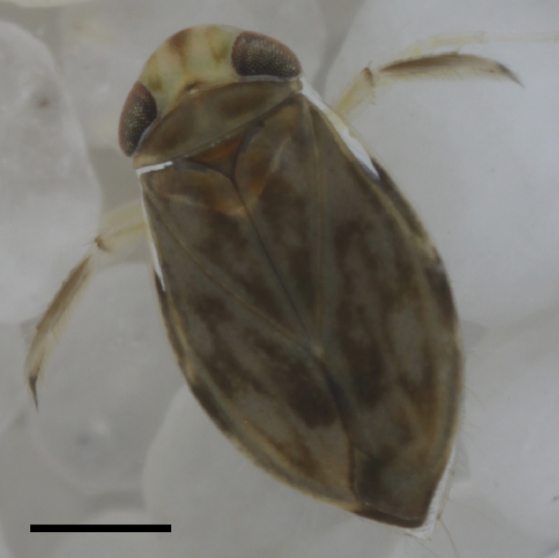 미크로넥타 스콜치 유럽 시골의 언덕은 사랑의 합창에 살아있다, 외침, 수컷 수생 벌레. 위의 작은 곤충, 미크로넥타 스콜치 (산록과), 무려 2.3mm로 측정되지만 클릭/윙윙거리는 소리를 쉽게 생성합니다. 인간에게 들리는 수면 위의 귀. 그것을 관점에서 보자면: 수영장 옆에 서서 누군가가 물속에서 말하는 것을 듣는 것은 거의 불가능합니다., 그러나 이 작은 곤충은 육지의 절지동물로 착각할 만큼 큰 소리를 낸다.. 매미와 같은 다른 시끄러운 곤충에 둘러싸여 있을 때는 그다지 인상적으로 들리지 않지만, 엠. 스콜치 소리가 우리 귀에 도달하기 위해 전파되는 신체 크기와 매체를 고려할 때 놀랍도록 큰 동물임이 밝혀졌습니다.. 수중에서 클릭할 수 있는 클릭의 강도를 숫자로 표시하십시오. 100 dB (음압 레벨, SPL). 곤충 세계로 우리를 축소하고 이 소리 생성은 같은 거리의 착암기! 이 작은 벌레가 포식자들로 가득 찬 세상에서 이 소리를 내며 도망갈 수 있었던 이유는 무엇일까요??
저자들은 이러한 결과가 얼마나 놀라운지 자연스럽게 지적합니다.. 가장 먼저 명백해지는 것은 물 뱃사공이 기본적으로 주변을 헤엄치고 있기 때문에 청각적 포식자가 없어야 한다는 것입니다.. 대부분의 수중 포식자는 엄격하게 시각적 사냥꾼이기 때문에 실제로 이것은 너무 놀라운 일이 아닙니다. (잠자리 유충, 물벌레와 딱정벌레 등…). 성 선택이 이러한 험한 부름의 발달을 놀라운 수준으로 이끌었을 가능성이 매우 높습니다.. 두 번째로 가장 놀라운 사실은 이 곤충이 몸집에 비해 얼마나 큰지 그래프로 나타내면 명확해집니다.. 그래프 상단에는 큰돌고래가 있습니다. (티. 잘린) 그 유명한 음파 탐지기와 함께. 그러나 가장 큰 특이점은 실제로 소리와 신체 크기 사이의 비율이 가장 높은 왼쪽 하단의 작은 곤충입니다. (31.5 의 수단으로 6.9). 알려진 다른 동물은 가까이 오지 않습니다.. 다른 수생 곤충에 대한 추가 조사는 더 놀라운 결과는 아니지만 유사한 결과를 얻을 수 있습니다.!
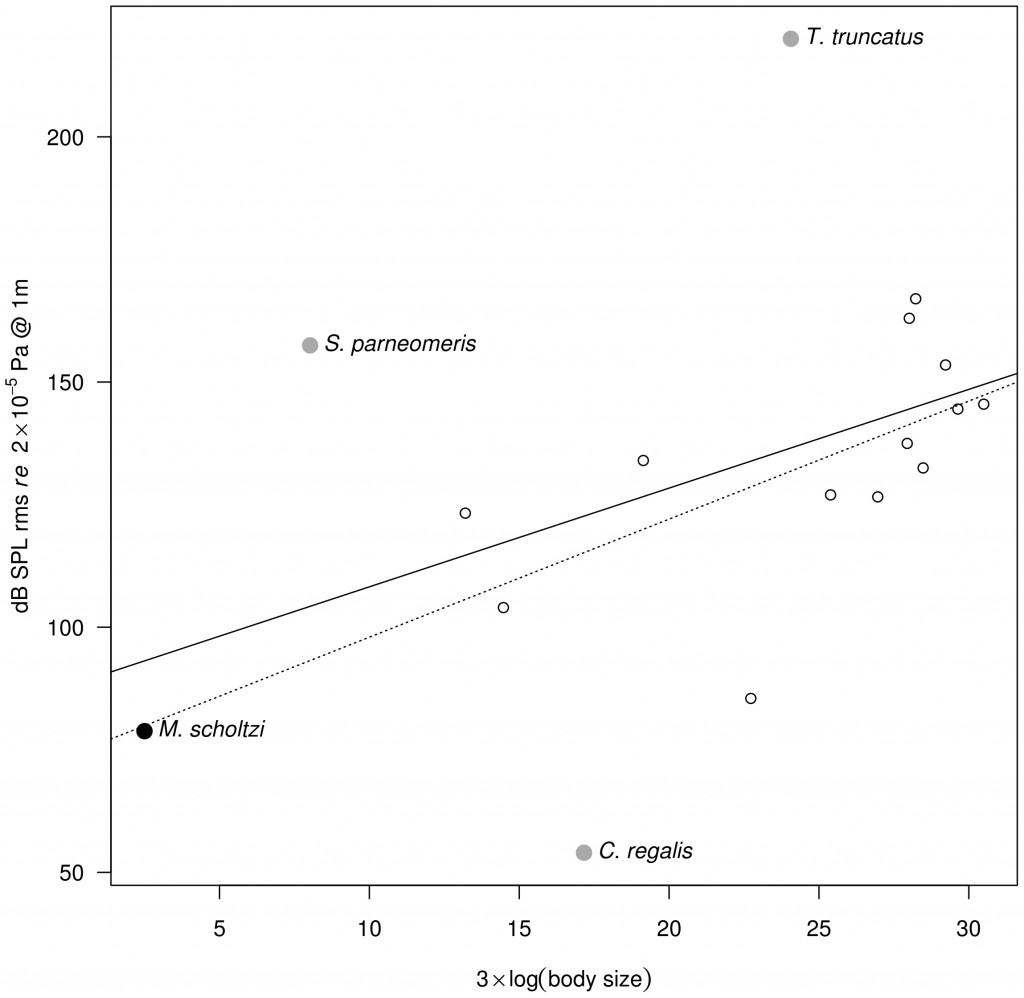
대한 보다 정확한 정보를 위해 “외침”, 버그 (이 인스턴스의 버그는 정확합니다; Corixidae는 Hemiptera 목에 속합니다. – 진정한 버그) 조급할 가능성이 있다 – 공기를 내뿜는 대신 소리를 생성하기 위해 두 부분을 함께 문지름, 북을 치다, 등… 이 기사에서 저자는 다음과 같이 추측합니다. “소리는 오른쪽 매개변수의 스트라이덴스를 문질러서 생성됩니다. (생식기 부속기) 여덟 번째 복부 마디의 왼쪽 엽에 있는 융기 부분에 대해 [15]”. 인용문을 올리지 않고, 속에서 수컷에 의한 스트라이드는 짝 매력에 대해 잘 문서화되어 있는 것으로 보입니다.. 그리고 예상대로, 뉴스 매체 및 과학 저널리스트 읽기 “생식기 부속기” 그리고 그것을 페니스로 번역: 그리고 당신은 이야기로 끝납니다 이와 같이. parameres의 기능은 반대 구조라는 점에서 하악과 유사하게 느슨하게 번역될 수 있습니다. (보통 털로 무장) 잡기 위해. 그만큼 정확한 사용법은 다를 수 있습니다 종 또는 주문에 의해, 그러나 그들은 음경과 매우 구별됩니다. (= 삽입기) 그들은 단순히 짝짓기를 촉진하고 정자를 전달하지 않기 때문에. 그래서 실제로 당신은 생식기를 가지고 있습니다 “클래스퍼” A를 “삐걱거리는 부분”. 그리고 par stridens의 가장 좋은 예는 다음에서 끝났습니다. 오래된 블로그. 이 구조는 아래에서 노란색으로 강조 표시됩니다. (그리고 개미의 복부에 우연히 존재한다.). 그러나 간단히 말해서 – 그것은 빨래판과 유사한 규칙적인 홈이 있는 표면입니다.. 결국 위에 인용된 문장은 다음으로 번역되어야 한다. “두 손가락이 찰싹 달라붙는 것처럼 함께 문지르는 복부 끝에 있는 두 구조”.
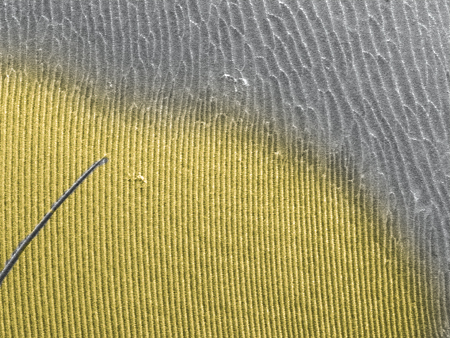 Pars stridens의 세부 사항 (노란색으로) Pachycondyla villosa 작업자의 네 번째 복부 등판에 (주사 전자 현미경 사진, 로베르토 켈러/AMNH) Continue reading The incredibly loud world of bug sex
크리스 Grinter 별, on June 20th, 2011 I’m going to keep the ball rolling with this series and try to make it more regular. I will also focus on highlighting a new species each week from the massive collections here at the California Academy of Sciences. This should give me enough material for… at least a few hundred years.
 Grammia edwardsii (Erebidae: 악티나에) This week’s specimen is the tiger moth Grammia edwardsii. Up until a few years ago this family of moths was considered separate from the Noctuidae – but recent molecular and morphological analysis shows that it is in fact a Noctuid. The family Erebidae was pulled out from within the Noctuidae and the Arctiidae were placed therein, turning them into the subfamily Arctiinae. OK boring taxonomy out of the way – all in all, it’s a beautiful moth and almost nothing is known about it. This specimen was collected in San Francisco in 1904 – in fact almost all specimens known of this species were collected in the city around the turn of the century. While this moth looks very similar to the abundant and widespread Grammia ornata, close analysis of the eyes, wing shape and antennae maintain that this is actually a separate species. I believe the last specimen was collected around the 1920’s and it hasn’t been seen since. It is likely and unfortunate that this moth may have become extinct over the course of the last 100 years of development of the SF Bay region. Grammia, and Arctiinae in general, are not known for high levels of host specificity; they tend to be like little cows and feed on almost anything in their path. So it remains puzzling why this moth wouldn’t have habitat today, even in a city so heavily disturbed. Perhaps this moth specialized in the salt marsh areas surrounding the bay – which have all since been wiped out due to landfill for real-estate (1/3 of the entire bay was lost to fill). Or perhaps this moth remains with us even today but is never collected because it is an evasive day flying species. I always keep my eye out in the park in spring for a small orange blur…
|
회의
|














